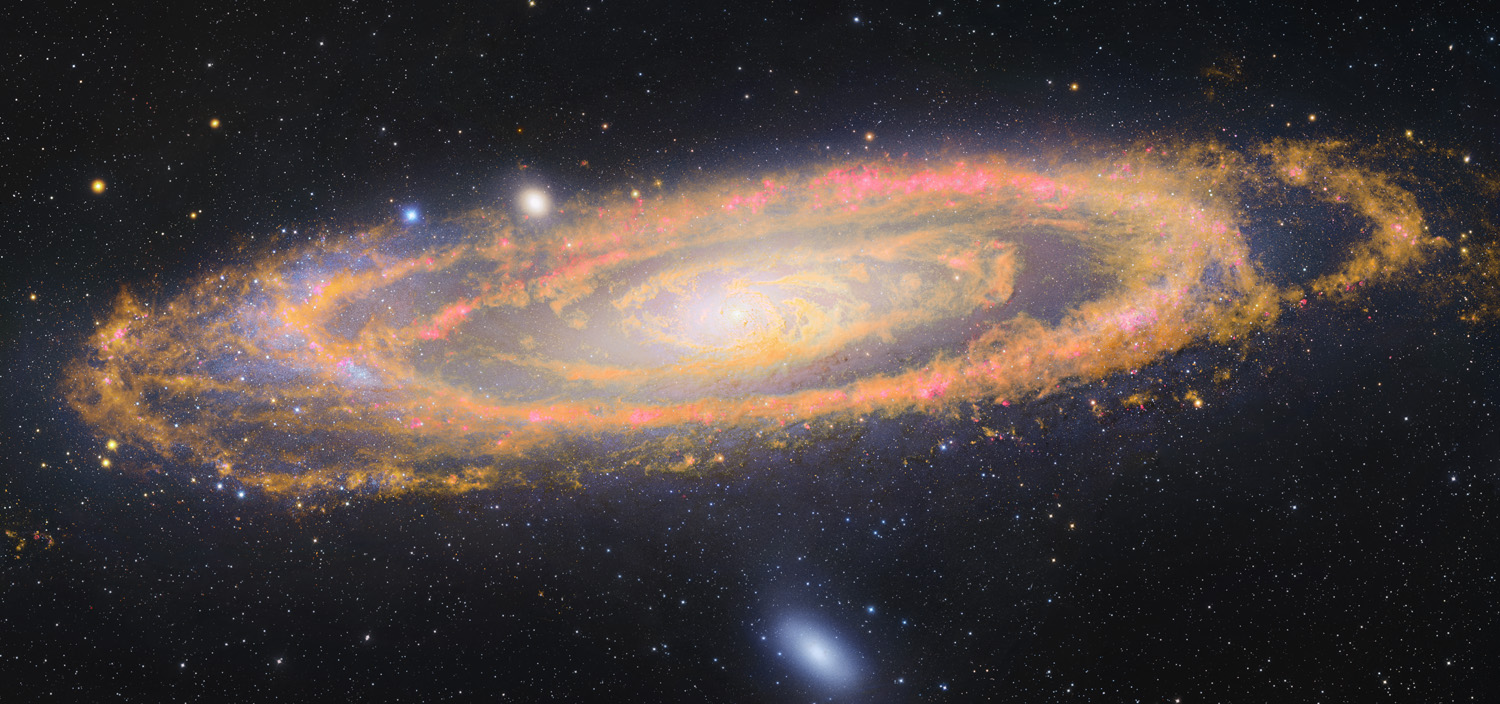DECEMBER 13, 2014
The Infrared Visible Andromeda
EXPLANATION
This remarkable synthetic color composite image was assembled from archives of visible light and infrared astronomy image data. The field of view spans the Andromeda Galaxy (M31), a massive spiral a mere 2.5 million light-years away. In fact, with over twice the diameter of our own Milky Way, Andromeda is the largest nearby galaxy. Andromeda’s population of bright young blue stars lie along its sweeping spiral arms, with the telltale reddish glow of star forming regions traced in space- and ground-based visible light data. But infrared data from the Spitzer Space Telescope, also blended directly into the detailed composite’s red and green color channels, highlight the lumpy dust lanes warmed by the young stars as they wind ever closer to the galaxy’s core. Otherwise invisible at optical wavelengths, the warm dust takes on orange hues. Two smaller companion galaxies, M110 (below) and M32 (above) are also included in the frame.
Image Credit
Subaru
Telescope (NAOJ),
Hubble Space
Telescope
Mayall 4M Telescope
(KPNO, NOAO),
Digitized Sky
Survey,
Spitzer Space Telescope
Processing & Copyright:
Robert Gendler


